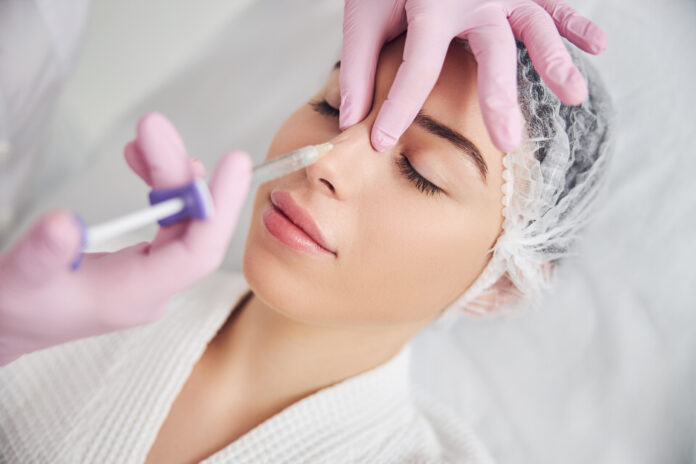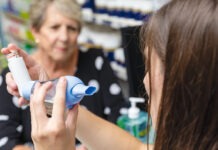Some pharmacists have recently pondered the possibility of administering cosmetic injectables such as Botox and dermal fillers, reaching out to PSA’s Pharmacist to Pharmacist Advice Line for guidance.
‘Now that pharmacists are injecting more medicines, and we have up-skilled to be able to do that, the next question on a lot of pharmacists’ minds is, “what about cosmetic injectables”?’ said Pooja Jadeja MPS from PSA’s Pharmacist to Pharmacist Advice Line
‘They want to know whether it’s something they can legally inject and what the regulatory requirements are.’
So can you – and should you? Australian Pharmacist investigates this prickly issue.
Where can pharmacists legally administer Botox?

‘Technically, anywhere except New South Wales,’ Ms Jadeja said. ‘But in other jurisdictions, it’s not defined in legislation whether it’s legal or not.’
Botulinum toxins – or Botox – is of course a Schedule 4 medicine. So to be lawful, a prescription would need to first be issued to the patient and dispensed.
What are the administration requirements?
While pharmacists operating outside the ‘Premier State’ could infer that they can legally administer dispensed cosmetic injections, they must question whether it is:
- safe and appropriate
- within their individual scope of practice
- for a therapeutic purpose.
‘It’s a professional obligation for pharmacists to ensure that all medicines they administer or dispense are for a therapeutic purpose,’ Ms Jadeja said.
Standard 11 (Administration of a medicine) of PSA’s Professional Practice Standards states that ‘The pharmacist safely administers or supervises the administration of a medicine to a patient according to their healthcare needs’.
‘As we are required to assess healthcare needs, it becomes a bit of a grey area when it’s for cosmetic purposes,’ she added.
Last week, the Australian Health Practitioner Regulation Agency (AHPRA) also published guidelines for cosmetic procedures such as Botox and dermal fillers, with new training and educational requirements implemented to protect patient safety, said Bill Wallace MPS, PSA Pharmacist – Professional Support Adviser.
‘Any pharmacist looking at providing services in this area should refer to that document to make sure they’re meeting those requirements,’ he said.
Do pharmacists currently have the right competency?
Unlikely. And developing that competency would require substantial training and assessment.
‘For a pharmacist to provide cosmetic injectables they would need to undergo further specialist training’, Ms Jadeja said.
While dermal fillers are injected subcutaneously, they often require deep administration onto the periosteum (the layer covering the bone) – particularly in areas such as the cheeks and temples.
Fillers such as those based on hyaluronic acid are also often viscous, making them harder to push through a fine needle or cannula.
And Botox, while administered intramuscularly, is injected into targeted muscles at specific depths and locations, depending on the muscle’s anatomy and the treatment objective.
‘There are precise injecting techniques involved, particularly with Botox, because you don’t want to hit an area under the skin that could relax a nerve that doesn’t need to be relaxed,’ she said.
So could pharmacists get this training and competency signed off? In theory, maybe. In reality, no, not as things currently stand.
‘There’s not a lot of training for pharmacists when it comes to injecting a medicine into a precise spot for it to have the desired effect.
‘Our [vaccination] training is more about intramuscular or subcutaneous administration for the purpose of the medicine being absorbed into the body.’
So there isn’t really a current pathway for pharmacists to get into this area.
What are the risks?
Substantial, and many.
From Botox, there’s blindness, temporary paralysis and infection, to name a few. Poor injection technique can also lead to botulism.
Meanwhile fillers can lead to asymmetry, stroke and vascular occlusion that can cause necrosis.
Cosmetic procedures may also not be covered by professional indemnity insurers but this is something pharmacists would need to individually confirm.
And if you don’t have indemnity cover, you can’t do it.
All health practitioners must have professional indemnity insurance arrangements that comply with the relevant registration standard (at least $20 million indemnity), for all aspects of their practice
And should something go wrong, the consequences could be quite severe.
‘The Pharmacy Board of Australia would assess the reasoning why this procedure was done, and whether there was appropriate and safe administration,’ Ms Jadeja said. ‘They would go into the entire technique of administration and check whether you comprehensively made an assessment of the therapeutic need for this medicine.’
If the pharmacist is not trained appropriately, there would be an extensive investigation as to why they chose to administer it.
‘Loss of registration …would be the likely outcome,’ she warned.
So if you’ve scrolled to the end looking for the answer, here’s the conclusion: No, pharmacists aren’t the next cosmetic injectors. Being a cosmetic injector is an entirely different career and while it could be legally possible, the regulatory and practice hurdles mean it isn’t and probably won’t become part of pharmacist practice.




 Dr Louise Schaper at PSA25[/caption]
Dr Louise Schaper at PSA25[/caption]











